Growing radish
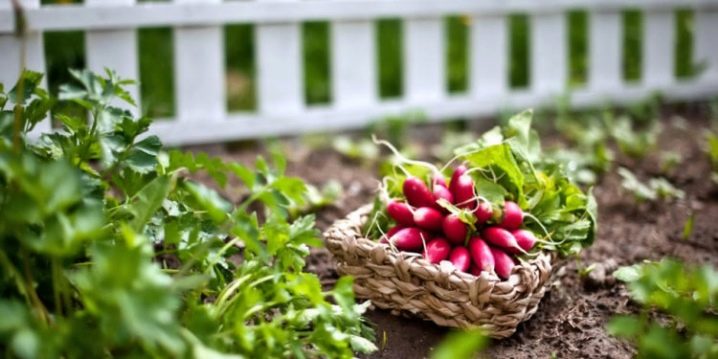
Growing radishes is a fairly simple process, accessible even to beginners in gardening. It is possible to carry out it not only in open and closed ground, but also at home.
How to grow outdoors?
Most often, radishes are still grown in the garden, since this method does not require additional heating and lighting of plantings. Planting crops can be carried out from the moment when the air temperature warms up to +5 degrees, which corresponds to mid-April. However, such an early planting should be accompanied by the protection of the beds with a dense film that creates a greenhouse effect. If the temperature rises to +15 degrees, then the vegetable will not need additional protection, but it will ripen in a shorter time. Some gardeners prefer to plant the crop in batches, maintaining an interval of 7 days, which allows them to regularly harvest the ripe roots.
According to the requirements of agricultural technology, the culture needs a well-lit place, protected from drafts. Radishes should not be placed in beds where cabbage, radish, turnip or other cruciferous plants previously lived. The plant will need loose soil with low acidity (from 7 to 7.4 units).
The lowered pH level is normalized by the addition of wood ash. Also, if only alumina is present on the site, it must be dug up with peat and sand.

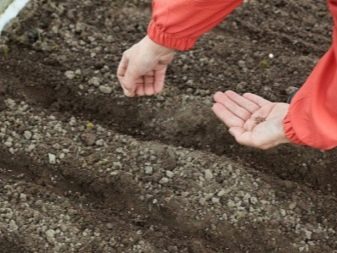
For radish in the garden, special grooves are prepared with a depth of about 3 centimeters. They should be separated by 15 centimeters from each other. The depressions are irrigated, after which they are filled with seeds, the gap between which reaches 3 centimeters. The land on the site is smoothed out, thereby hiding the planting material, after which it is mulched with humus and, if necessary, covered with a transparent film.
Crop care features emphasize the importance of regular irrigation. The frequency of watering is determined depending on the condition of the soil - it should be moist, but without excess, provoking putrefactive processes. It is important to remember that due to insufficient moisture intake, the fruits crack and become bitter, and the plant itself directs all its efforts to the no longer so necessary build-up of green mass. If the garden bed was dug up with the addition of peat, compost and sand in the previous fall, then one top dressing will be enough for the crop throughout the season. An unsuitable soil mixture requires more frequent fertilization.
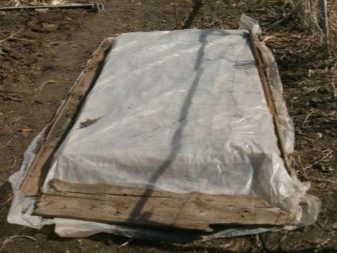
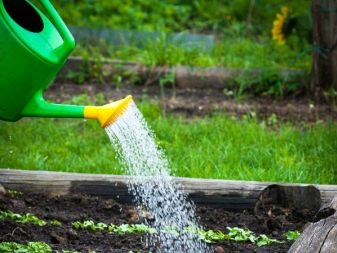
If the aboveground part of the seedlings has a slightly green color, then the culture will require nitrogen-containing complexes. Small fruit size, but good greens signal that a mixture containing potassium and phosphorus is more suitable for radishes. The beds can be sprinkled with wood ash, after which they can be abundantly irrigated, and the aisles can be shed with infused and diluted chicken droppings. An herbal infusion that has been fermented in the sun for several days is also suitable.
Regularly, the beds will have to be thinned so that a gap of 3 to 10 centimeters remains between the root crops, depending on the diameter of the radish... It is necessary to remove not only diseased and damaged specimens, but also those that have weakened or frozen in development. Thinning is allowed from the moment a couple of leaves are tied on the sprouts.
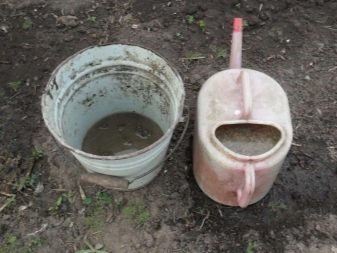

If necessary, the plants are weeded, and after watering the soil must be loosened so that the root system receives the necessary oxygen. The procedure must be carried out with great care so as not to harm the developing roots.
Mention should be made of the possibility of pre-growing seedlings of a culture, which afterwards will only have to be transported into open ground. Early maturing varieties that are resistant to throwing out arrows are most suitable for this method. Sowing seeds is carried out in February-March or from August to September. The disinfected and presoaked material is planted in a light nutritious soil mixture and covered with cling film or glass. After the sprouts appear, they are hardened for a couple of days, and then put in heat. If necessary, shortly before landing in open ground, a pick is carried out.

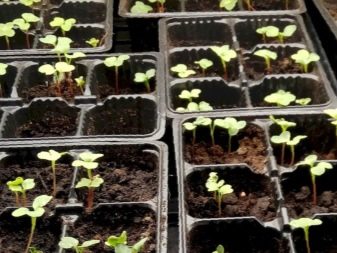
Growing in a greenhouse
The technology for growing radishes in a greenhouse looks similar.... For indoor ground, it is customary to choose varieties that are not afraid of high humidity, and are also capable of developing in low light conditions. Sowing is carried out earlier than in comparison with open ground, especially if the greenhouse has a heating system - you can start as early as February. For culture, deep beds are prepared that can accommodate the root of a plant, reaching a length of 25 centimeters. Racks filled with containers or special cassette structures are also suitable. The planting material is pre-soaked in a 1% manganese solution. The soil in the garden is also irrigated with a similar liquid.
To grow successfully, radishes will need to be kept at 18 degrees during the day and 10 degrees at night. Watering can be carried out both every day and every 3-4 days - the exact mode depends on the situation. It is allowed to use only heated water for this purpose. You can fertilize the culture with ammonium nitrate, superphosphate, sulfate sulfate or humus.
Fresh manure is not suitable as fertilizer, as it can provoke a burn of the root system.
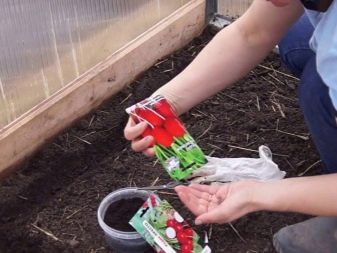

How to grow at home?
If you plant radishes in containers on a balcony or even a windowsill, you will enjoy the harvest all year round. However, it will be right to choose the variety that is designed for such specific conditions - "Champion", "16 days" or "Diego".
Conditions
If the cultivation of the crop will be carried out on the windowsill of the southern window, then the containers with the planted seeds are allowed to be placed on it already in January. In the event that the windows facing west or east are involved, the disembarkation will have to be postponed until February. For a vegetable, it is extremely important that the daylight hours are about 12 hours. In case of insufficient lighting, special lamps will come to the rescue, and in the summer, with an excess of light, the root crop will need to be hidden under a dark canvas from 17:00 until the morning. The optimum temperature for radishes is +18 degrees.
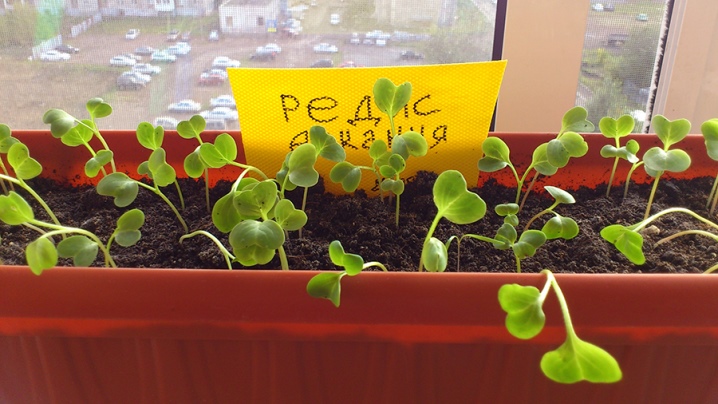
The ways
Only healthy material is suitable for planting. Grains of brown color are to be selected, since a gray tint indicates that the shelf life has been exceeded. Suitable seeds are lowered into the water, after which those that float are completely thrown away. The seeds that have gone to the bottom are then kept for about 20 minutes in a 1% solution of potassium permanganate. Soil mixture for radish is prepared from ordinary soil or peat in the amount of 2 parts, 4 parts of humus and 1 part of sand... It is also treated with manganese or heated or frozen.
It is customary to use special cassettes or trays, plastic cups or ordinary containers directly for growing vegetables. They must have sufficient depth so that the layer of filled earth is 35 centimeters, and there is room on top for filling up the soil. Since such containers are quite difficult to find in the first store you come across, you can also use plastic bottles, in each of which one seed will be laid out. Egg cells are not suitable for this culture, as they have insufficient dimensions.


In a container filled with earth with already cut holes, a hole is dug, the depth of which does not exceed 1.5 centimeters. After the seed is placed in it, it remains only to level the surface so as to hide the material. The homemade garden bed is irrigated and covered with cling film until the first leaves appear.
Watering
Watering radishes growing at home should be sparingly, waiting for the soil to dry out. In the summer, the surface can be sprayed with a spray bottle, but making sure that no drops fall on the leaves. Watering must end good loosening and hilling of the earth in the area of the stems.

Top dressing
7 days after the appearance of leaves, it is proposed to feed the culture with a mineral complex. The granules dissolve in water and are used for watering the soil, and each tablespoon will have to be diluted in 10 liters of water.
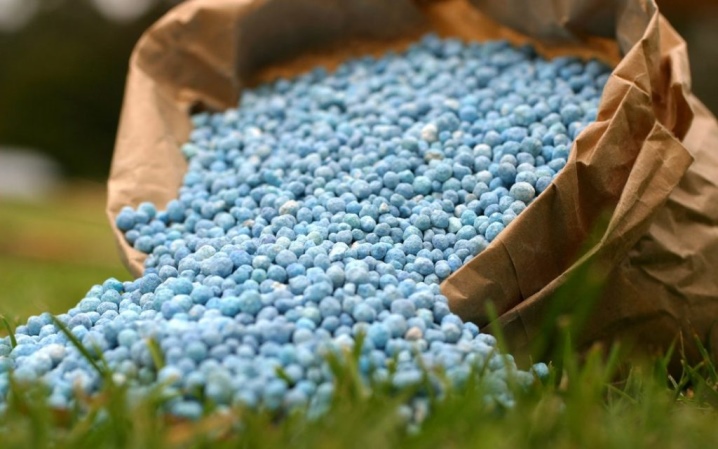
Ripening terms
The ripening time of the culture largely depends on the characteristics of the variety.... For example, ultra-early ripe radish of the "18 days" variety grows literally by leaps and bounds - you can collect root crops after 3 weeks. By the way, it is also famous for its good yield - up to 2.5 kilograms can be obtained from each square meter. The "Children's F1" hybrid also rises quickly - in 16 days. It takes about a month for early maturing varieties to ripen. So, picking round juicy vegetables "Heat" is obtained after 20-25 days, and "Polinka" pleases with the harvest even earlier, after 3 weeks.
For mid-season varieties, a little more time is required: 22 days for the Cranberry radish and 3 weeks for the Zlata radish. Late-ripening radish ripens from 1 to 1.5 months. The readiness of the fruit for collection is determined by its size - the diameter should be at least 2.5 centimeters.
By the way, the lifespan of the culture itself is only a year or two.
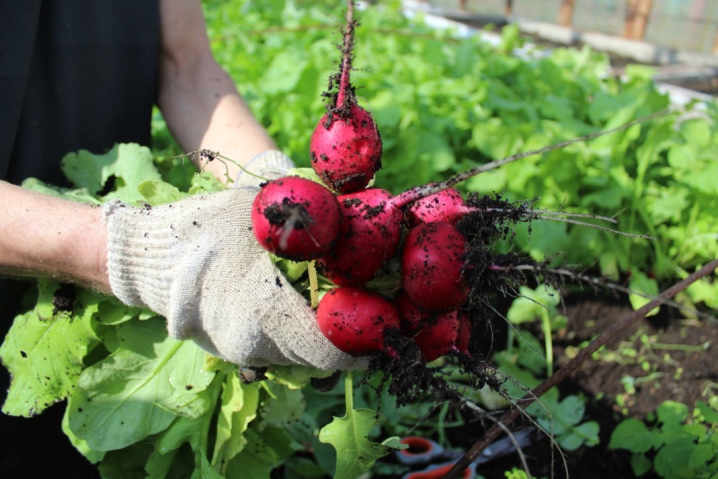
Diseases and pests
Since the radish grows quite quickly, this short period usually passes without disease. However, in some cases, the fruits are still covered with mucus and take on an unpleasant odor. This problem is solved easily and simply - by processing the beds with 1% Bordeaux liquid. If the leaf blades turn yellow, dry out or wither, then it is proposed to treat them with milk of lime. Onion infusion helps to cope with blackening and curling stems.
If the tops of the plant wither, and the roots are covered with growths, then the problem lies in the keel - a fungal disease that develops on acidic soil. In addition, the crop can suffer from white rot, which impairs the characteristics of the fruit, powdery mildew, covering the leaves with a whitish bloom with a specific odor, and mosaics that deform the bush.
To prevent such troubles, the beds are regularly treated with ash or tobacco dust.


The most common pests include cabbage moths, flies and moths, flea beetles and clickers. Cruciferous fleas cover the leaf blades with holes. To combat them, the soil in the garden is regularly loosened and sprinkled with red pepper powder. The cabbage fly spoils the fruit, creating grooves and notches in them. The distribution of tobacco dust, combined with ash, or a mixture of mustard and ground pepper, helps to get rid of the larvae of this pest. Slugs and snails eat the tops of the plant.
So that insects do not get to the garden at all, traps with crushed shells are prepared for them, or self-adhesive tapes are suspended.

Possible problems
The bitter taste in the root crop arises from insufficient irrigation of the growing bush, and the appearance of fibrous pulp indicates excessive soil temperature or uneven watering.
The culture goes into the arrow due to the thickening of the plantings. The reason may also be the use of flowering varieties during the hot season. Hollows in fruits are formed due to the use of fresh organic matter or insufficient irrigation.
Radish stretches upward when it lacks light. In this case, only one thing can be done - to install additional lighting devices. In some cases, it is found that the bush has stretched out due to too high temperatures. The growth of green mass with insufficient development of the root crop is the result of an excess of nitrogen introduced.
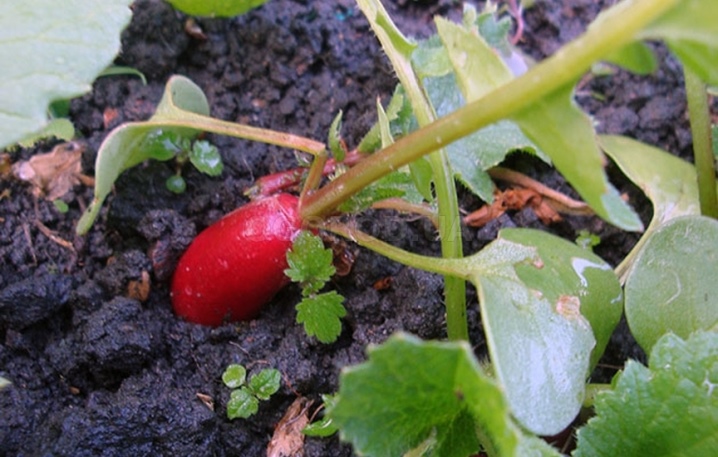









The comment was sent successfully.